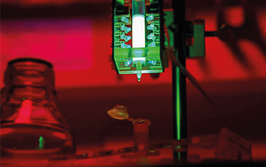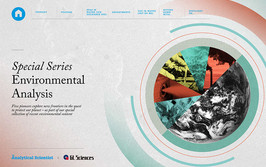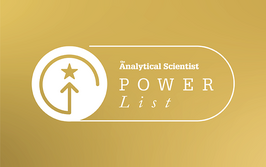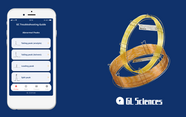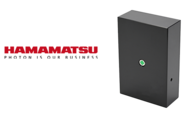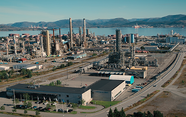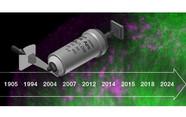Technology Panel: Comprehensive Chromatography
Experts from four major instrument manufacturers tell us what’s new in comprehensive separations – and give their predictions for what the future has in store.
Tom van de Goor, Claude R Mallet, Marco Koenen & Björn-Thoralf Erxleben |
A Bright Future
Agilent Technologies has seen comprehensive two-dimensional techniques become increasingly established, as customers realize that the higher separation power can save them time in their overall workflow. GC×GC systems have long been on the market. Commercial LC×LC systems appeared only a few years ago but are already being used widely in academia and industry. For complex samples, such as petrochemicals, biopharmaceuticals, and natural products, or in omics-types studies, we even see combinations like LC×LC used with ion-mobility separation and Q-TOF MS (LC×LC-IMS-Q-TOF) – we could call this a five-dimensional separation.
GC inherently has more separation power than LC; but LC is probably applicable to many more compounds than GC, and so the potential impact of LC×LC systems is much higher. We have seen a strong rise in the use of other 2D-LC techniques, such as multiple-heartcutting (mLC-LC) or high-resolution sampling (HRS-LC×LC), in the pharmaceutical and chemical industries, most often in the development stage of new drugs or chemicals. Here, moderately complex samples with 10 to 100 components are being analyzed by LC×LC to save time and get results faster compared with multiple 1D LC methods. Another area of impact is within the strongly growing biopharmaceutical space, where highly complex samples need greater separation power.
A challenge for comprehensive chromatography techniques (CCTs) has been information overload. Completely separating and identifying every component in a mixture sounds desirable, but most analysts have a few vital questions; it is challenging when the answers are hidden in overly complex data sets. For example, the combination of GC×GC and high-resolution accurate-mass (HRAM) MS has proven a powerful comprehensive technique for differentiating complex samples and discovering unknown components; as a result, data are often complex. Software can be very helpful in automating differential analysis (identifying the differences/similarities in sample sets), and identifying the chemical characteristics of the differing components, but it may not produce a comprehensive chemical explanation. Better software is perhaps the key to expanding the role of GC and 2D-LC MS-hyphenation in general routine analysis.
Commercially available GC×GC and LC×LC systems are already a huge step forward compared to the “homebrew” systems from some years ago. However, there are still opportunities to achieve further integration with MS, especially in terms of data analysis. In the QA/QC area, compliance of all software packages for data acquisition and data analysis would be required. Moreover, we could imagine dedicated analysis kits consisting of columns and methods for specific applications. Size reduction could become important, too, along with software tools to assist the user in the method setup. Finally, even though the overall, ongoing costs might be lower in the complete workflow, finding the initial capital remains a key barrier in the adoption of commercially available GC×GC and LC×LC systems.
That said, there is no shortage of interest in CCTs, with conference sessions on multidimensional chromatography often standing room only. The most obvious opportunities are within research and academia as regulatory testing constraints act as a barrier to the adoption of new technology in general.
In my view, there is no technical reason why CCTs cannot be embedded into today’s workflows. In general, the analytical world is rather conservative and we rarely see new technologies “taking off” immediately. However, we are confident that CCTs – and especially LC×LC – will continue to grow and become an established technique in analytical labs around the world and in multiple applications.
Balancing Act

High sensitivity and fast separation are the top features requested from users for new instrumentation. Those features are highly desirable, but often users will need to spend more time on other key steps, inevitably creating bottleneck effects in the analytical workflow.
Multidimensional chromatography solutions clearly offer superior performance for many applications involving analysis of complex matrices. However, this increased performance comes with increased complexity. The addition of fluidics, pumps and circuitry has fed the perception that it is difficult to master CCTs, particularly LC×LC, which has slowed down adoption.
Comprehensive LC×LC is primarily used to slice a single high-resolution separation of a complex sample into discrete volumes followed by a re-injection onto a second resolving dimension. The resulting separations are then re-assembled using 3D contour plot software. In this configuration, the overall resolution is governed by timed-base multiplexing using slow elution parameters in the first resolving dimension and fast gradient conditions on the second dimension. The feed rate between both dimensions and refocusing issues are the prime operating parameters.
In a recent collaborative publication, a loop/trap using a built-in dilution stream with a pulse elution of increasing eluotropic strength on the first dimension resolved three main issues with comprehensive LC×LC – under-sampling, refocusing, and time constraints (1). With a time decoupling effect, both separating dimensions are now totally independent of each other – and that opens opportunities for novel separation strategies for complex matrices.
With today’s technology, it is possible to create tailored multi-separation platforms. For example, many fields are locked into strict operating parameters and a vast majority of methods that use standard HPLC with UV detection as a starting point for low cost operation. Most users can relate to the low performance of validated LC-UV methods when dealing with unknown entities; however, the idea of switching to UPLC-MS and going through re-validation is daunting. With a selective heartcutting approach, a validated method can be directly coupled to a UPLC-MS method via a loop/trap interface. In this type of setup, an unknown signal from a validated HPLC/UV separation is simply diverted to an enrichment trap for desalting, refocusing and solvent exchange. The captured entities are back flushed onto a UPLC-MS separation, thus providing instant MS data with either low or high resolution capability.
More sensitive detection leads to more complex systems, and a need for intuitive, easy-to-use control software. Today, most software is constructed to control a small number of components for simple separation and detection – perhaps a single pump, autosampler and detector or a single platform. In future, multi-component software control will offer more options, including automation and multiplexing capability, leading to fully integrated workflows that include sample preparation, separation and detection. Upgrading to XYZ robotic handlers with single or dual arms will use time-dependent features to create a seamless and fully integrated workflow.
Time to Think 2D
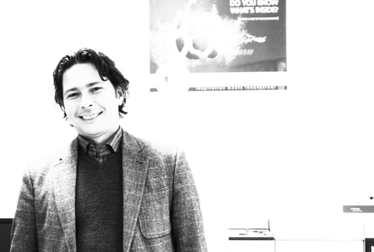
As a partner of GC×GC pioneer ZOEX, JSB has a broad view of the market and applications of GC×GC technology. What are we seeing? GC×GC is increasingly moving into standard QC, which tells us that the technology is maturing. In addition, there’s a shift from thermal modulation towards flow and reversed-flow modulation, making the technique accessible at a lower-budget. On the other hand, we have also seen high-end GC×GC QTOF applications growing in number, mainly in environmental or food research.
In contrast, LC×LC is relatively new and requires a reasonable degree of application-specific and method development experience. The early adopters are all looking at this technology but I have not seen it trickle down to general QC applications.
Comprehensive technologies give the researcher or analyst a head start, and today’s technology is easier to use than ever. Software allowing “blinking” is a great help in evaluating images, group typing is becoming a standard option, and automatic reporting has become much easier. More and more contract laboratories active in the petrochemical industry and environmental analysis are looking at GC×GC as a viable technology for their day-to-day work, and we expect to see other industries follow suit.
In the near future, we expect to see greater use of comprehensive 2D separations in proteomics, allowing researchers to more completely map the physiology of a tissue. Food safety is another area where we expect to see growth, as regulations demand deeper and more precise analyses.
JSB is dedicated to supporting GC×GC as a technology, and we are investing heavily in hardware and software development. Personally, I am a strong believer in the technology, having seen many examples of customers solving huge problems by using comprehensive techniques. I believe that 2D is the future, and that many industries should be “thinking 2D”.
Comprehensive Collaborations
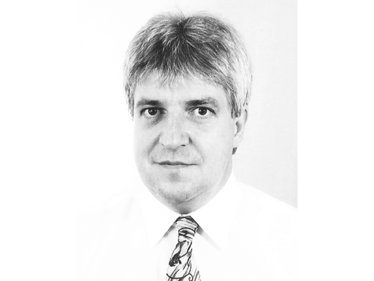
The growth in comprehensive chromatography technologies, such as LC×LC, GC×GC, and even LC×GC, is exciting. Though heartcutting multidimensional systems are typically easier to operate, the full advantage of orthogonal multi-dimensional chromatography is only addressed by comprehensive chromatography.
Shimadzu has been manufacturing GC×GC systems for many years, and it’s been great to see the number of systems in use growing. But we recognize that the complexity of the systems and applications require expert operators, as well as solid data processing and interpretation.
The advantages of LC×LC systems are clear, but the number of systems currently up and running is still somewhat small, thanks to the tricky combination of a very slow and a very fast separation, plus dilution of the sample resulting in very low concentration in the second dimension. Miscibility issues between first and second dimension and the necessary use of MS detection also limit the solvent selection. A combination of these factors means that so far we mainly see these systems used in R&D and operated by experts.
Looking back over the past decade, advances in MS detection played a fundamental role in the development of comprehensive chromatography methods. Improved sensitivity compared with standard detectors and the chance to perform structural elucidation with fast MS systems have made a big difference.
We’ve come a long way since the first 2D chromatography systems, but I look back with fondness to seeing those first applications running in a customer lab. Although the instrumentation was basic, the potential of these techniques was obvious very early on, and those initial systems were the starting point for improvements in hardware and software that are still ongoing. Our key technology challenges these days are development of flow modulators for GC×GC and optimizing the transfer valve in LC×LC, as well as software optimization for method development.
The challenge is to make even complex aspects, such as processing software and peak integration from the separation contour map, accessible for non-expert users. Better integration of special features for comprehensive chromatography in “standard” chromatography software is one aspect – it is important that the user interface allows a simple switch between standard features (library searches, integration and quantitation) and special features (3D mapping, image comparison, and so on).
Looking beyond GC×GC and LC×LC, coupling of two different techniques (for example LC×GC) still has many challenges, with the analytical requirements and limitations of both techniques to be considered. Although the advantages of a LC sample prep step before GC separation are obvious, only a few such systems have been built so far. Recent and future development has also been focused on SFC and LC separations, with SFC×LC generating interest because of the potential for analysis of complex samples and for full automation of both separation and extraction. Especially on the LC/SFC side, we expect more ready-to-use application systems for routine tasks. Whether those systems are comprehensive LC×LC systems or heartcutting multidimensional LC(SFC) systems will depend on the specific application and ease of use for operators.
We believe that technology optimization is best achieved when instrument suppliers work hand-in-hand with key researchers at universities and institutes. Shimadzu has long-term collaborations ongoing with Luigi Mondello and Paola Dugo at the University of Messina, who together have been a driving force for developments in terms of comprehensive LC×LC and GC×GC. Working with academic groups is at once a challenge, motivation and incentive for our development and application teams.
- SS Jakobsen et al., “Increasing flexibility in two-dimensional liquid chromatography by pulsed elution of the first dimension: a proof of concept”, Anal Chem, 89, 8723–8730 (2017).
Tom van de Goor is Senior R&D Manager at Agilent Technologies, Waldbronn, Germany.
Claude R Mallet is a Senior Scientist, Work Flow Integration, Separation Technologies at Waters, Milford, Massachusetts, USA.
Marco Koenen is Managing Director of JSB Group and ZOEX EU, Eindhoven, the Netherlands.
Björn-Thoralf Erxleben is Senior Manager at Shimadzu Europa GmbH, Duisburg, Germany.
